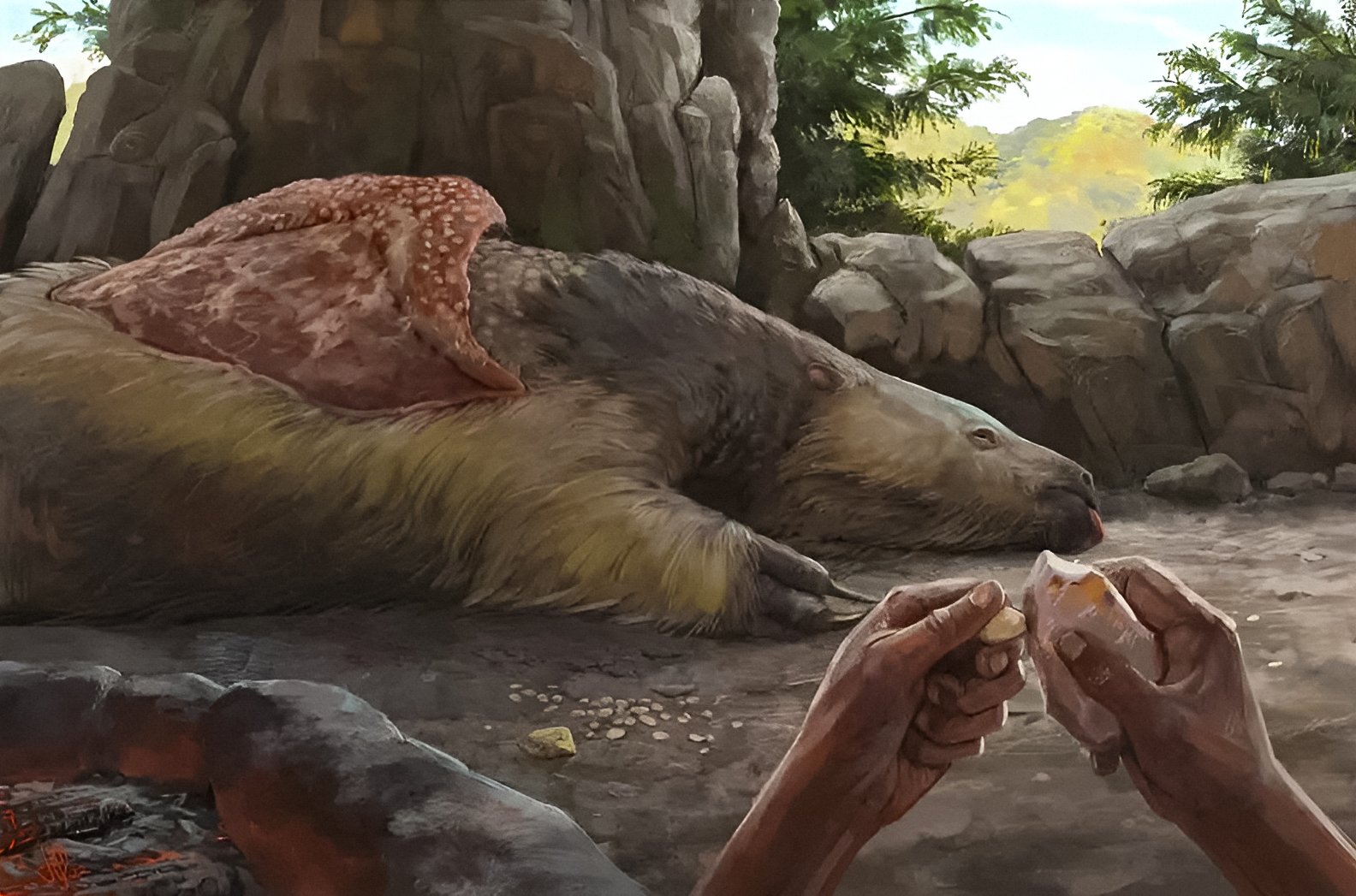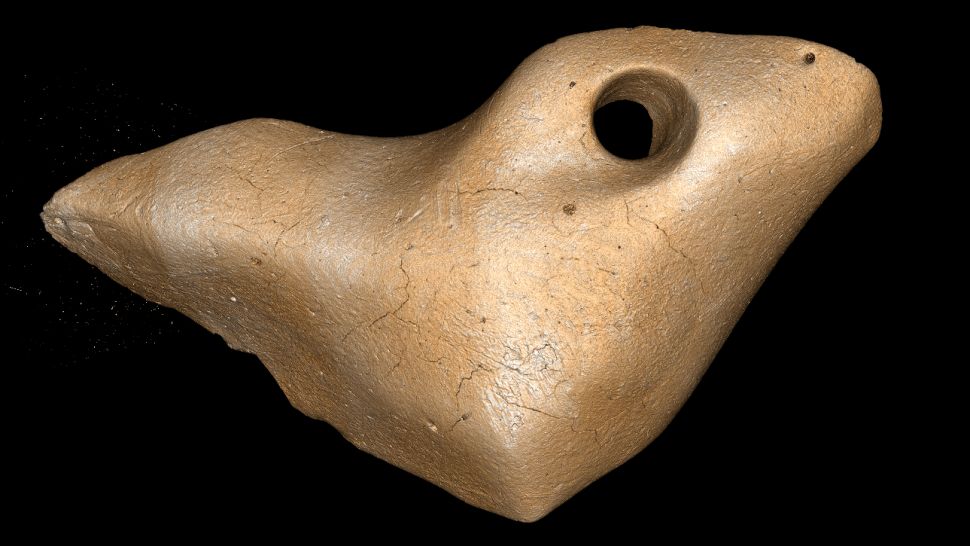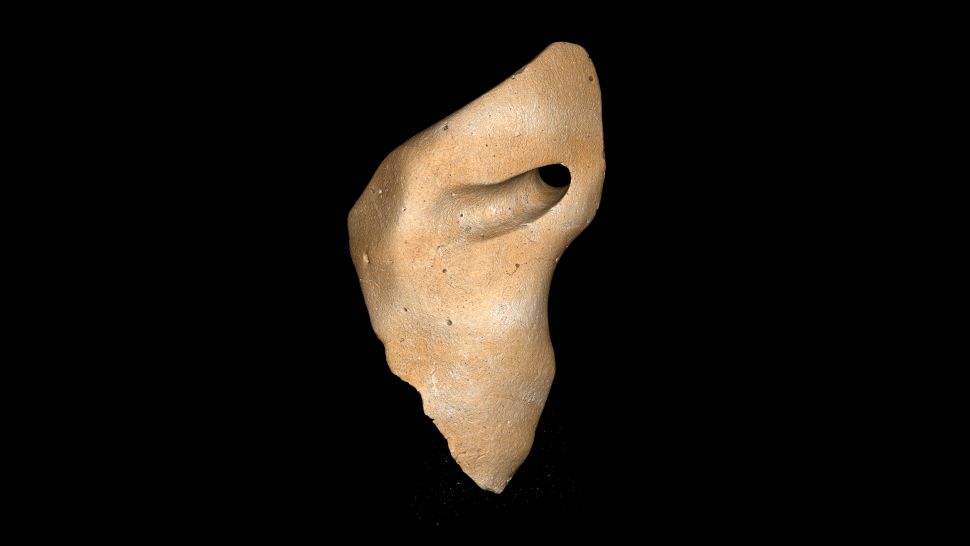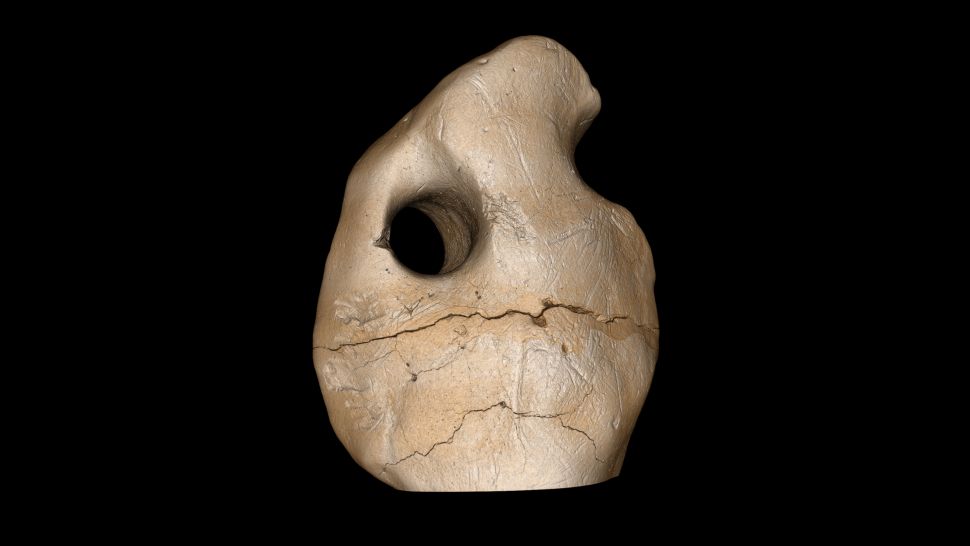New evidence suggests that humans may have settled in South America as far back as 25,000 years ago, which is evidenced by bones from a long-extinct sloth that were fashioned into pendants by ancient people.

Osteoderms — armor-like bony deposits found in animals like armadillos — discovered in the Santa Elina rock shelter in Brazil, near stone tools, had tiny punctures that could have only been created by humans.
A paper released on July 12 in the journal Proceedings of the Royal Society B reported that this discovery might be one of the earliest indications of human presence in the Americas.

Since 1985, archaeologists have been examining the Santa Elina rock shelter in Mato Grosso state, Brazil. Previous studies have revealed more than a thousand figures and symbols on the walls, hundreds of stone tools, and thousands of sloth osteoderms, three of which have been drilled by humans.
The recent study provided a thorough examination of sloth osteoderms, concluding that the holes in the bones were most likely caused by humans. This discovery pushes back the estimated date of human settlement in Brazil to 25,000 to 27,000 years, in accordance with the controversial evidence of early human occupation in South America, such as the dated Toca da Tira Peia rock shelter in eastern Brazil at 22,000 years ago.
The team employed both microscopic and macroscopic visualization techniques to determine that the osteoderms and their minuscule openings had been polished. Further, the team observed incisions and scraping marks indicating they had been fashioned by stone tools. Additionally, they were able to rule out rodents as the makers of the holes because of the presence of animal-inflicted bite marks on all three osteoderms.
The findings demonstrate that the three osteoderms were altered by humans into artifacts, likely employed as personal ornaments, according to the authors in the study.

In an email to Live Science, Mirian Pacheco, a lecturer in paleontology at the Federal University of Sao Carlos, Brazil, commented that “it is virtually impossible to define the real meaning these artifacts had for the occupants of Santa Elina.” Still, the form and large amount of osteoderms “may have influenced the making of a specific type of artifact such as a pendant,” she suggested.
Stone tools found alongside human-modified sloth bones in geological layers that are estimated to be 25,000 to 27,000 years old strongly suggest that humans arrived in South America earlier than was previously thought.

Thaís Pansani, a paleontologist from the Federal University of Sao Carlos in Brazil, commented in another email to Live Science that the evidence supports the notion that humans were in Central Brazil at least 27,000 years ago, which has been a consensus among her colleagues for the past 30 years.
Matthew Bennett, a geologist at Bournemouth University, conducted research on human-sloth interactions in North America and was not involved in this project. The findings indicate that ancient humanity applied the remains of sloths for a variety of purposes.
In an email to Live Science, Bennett stated that this work has the potential to back up the concept of people living in the Americas during the Last Glacial Maximum, which was the coldest period of the last ice age.
Despite this, a significant number of sites in South America have not been studied in-depth, so the discourse about humans’ introduction to the Americas is still ongoing. We are of the opinion that more information is waiting to be discovered in the rock shelters and caves of Brazil that have yet to be explored.




